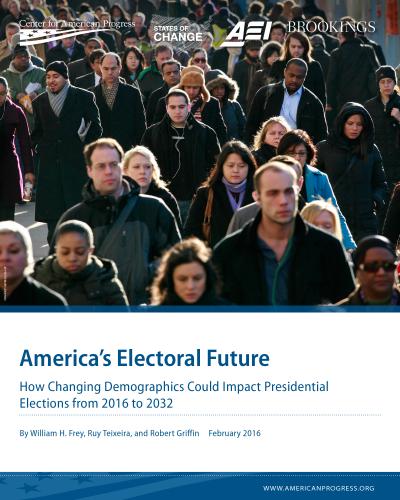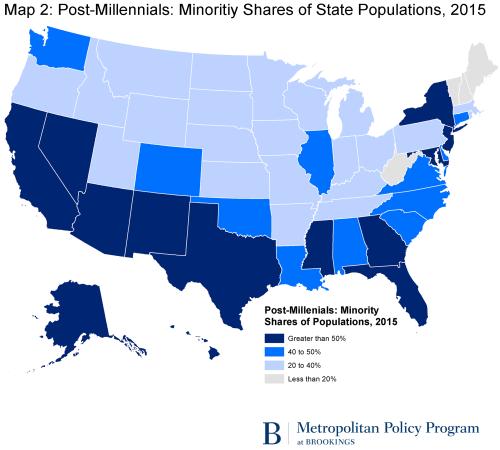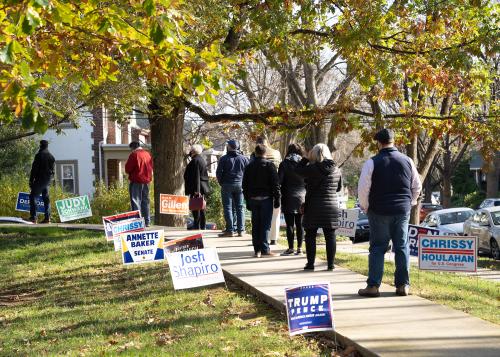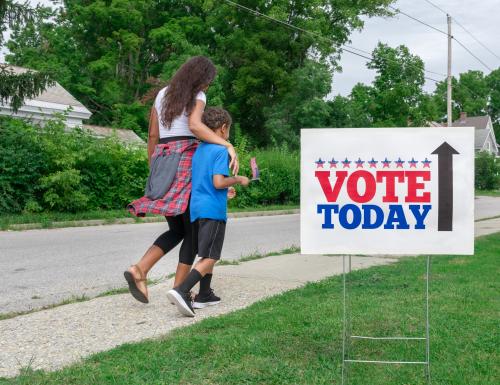The election and reelection of President Barack Obama heralded the emergence of a demographic coalition of racial minorities, young adults, and growing white voting blocs that expanded Democratic support from the coasts and Midwest to new parts of the Sun Belt. Obama’s victories symbolized the arrival of an American electorate destined to become the new mainstream in 21st Century.
This movement was stopped in its tracks by a blowback of older Americans who are mostly white, live in all parts of the country, and elected Donald Trump over Hillary Clinton.
Among votes counted at this time, exit poll show Republican Trump bested Democrat Clinton by a net of 6,414,252 votes among voters over age 45. As for voters under age 45, Clinton received a net of 6,679,191 votes more than Trump.
Although this national young/old split is fairly even, older voters made deciding numeric differences in Trump’s favor for consequential swing states, especially in the Rust Belt. This differs from the two previous presidential elections when the younger voters gave Barack Obama his wins.
The Democratic leaning young adult vote is now driven by racial minorities who made up 37 percent of voters under age 30 in the 2016 election. In contrast, whites constituted 78 percent of the voters over age 45 and 87 percent of those over age 65. On Nov. 8, whites in these age groups showed the strongest support for Donald Trump in almost every swing state that he won.
The educational profile of these older whites is notable—65 percent are not college graduates. These so called “non college whites” were the major engine for Trump’s surge with high turnout and strong voting preferences. Non college whites comprised 34 percent of all voters and favored Trump over Clinton by more than 2 to 1.
Whites, especially older whites, were responsible for reversing past Democratic expansion in the Sun Belt states of Florida and North Carolina, as well as for capturing previously Democratic leaning northern states: Iowa, Michigan Ohio, Pennsylvania, and Wisconsin.
In 2012, Obama won all of these states, except Iowa, by gaining more votes from racial minorities than he lost from whites. Trump carried each by gaining more white votes than he lost to racial minorities.
The reasons for this blowback from older demographic blocs surely has something to do with their perception of doing poorly during the recession and post-recession years and their willingness to rebel against Washington D.C. However, it is also rooted in something I have called a “cultural generation gap,” a disconnect between older, primarily working class, whites and the increasingly diverse and globalized nation we are becoming.
This disconnect is evident in a recent PRRI poll, which shows the former agrees that, since the 1950s, America’s culture and way of life has changed for the worse. This perception is in contrast to millennials, minorities and whites with college degrees who see it as a change for the better. Donald Trump’s messages of greater isolationism, nostalgia and immigrant deportation resonated strongly with the group.
As I wrote in my book “Diversity Explosion,” there is a geographic dimension to this cultural generation gap that has political implications. The dispersion of younger Hispanics and Asians to the Sun Belt and youthful black migration to the South will make these growing regions more competitive for Democrats. But so too will former northern Democratic strongholds become more competitive for Republicans as white baby boomers become a bigger part of their older voting populations.
Obama was able to take advantage of the former by extending the political battleground to the interior West (Nevada, Colorado, and New Mexico), as well as the South (Florida, Virginia, and North Carolina). Importantly he maintained the Democratic hold on many whiter, northern states. Yet the recent blowback from the older white bloc cost Hillary Clinton key pieces of each region.
The diverse demographic transformation, as well as the rise of college educated whites, will continue to sweep across this country, impacting all ages and regions. If current party voting proclivities persist, these trends could provide the wind beneath the Democrats’ sails in several presidential elections to come and, in the process, integrate new diverse generations into a productive globalized economy. But, in the meantime, if a sharp disconnect is allowed to exist between tomorrow’s and yesterday’s America, the nation will once again experience the kind of demographic blowback that elected Donald Trump as our next president.







Commentary
The demographic blowback that elected Donald Trump
November 10, 2016